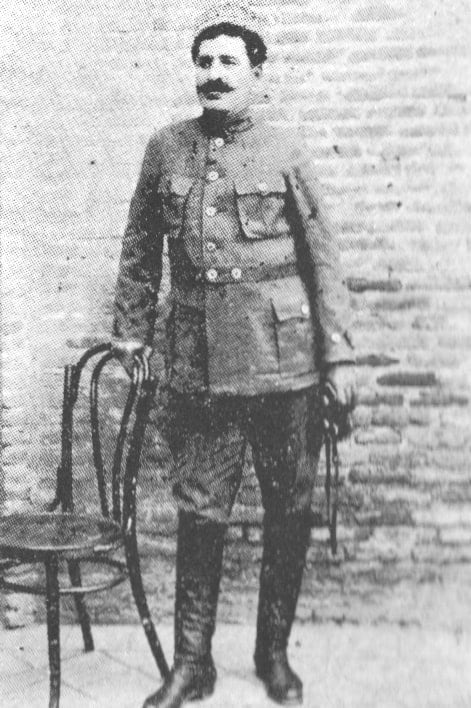Death of General Sempad (March 20, 1956)

A fearless fedayee and comrade of arms of General Antranig, General Sempad fought for twenty years for the liberation of Armenia and became one of those few freedom fighters who have their tomb in a free and independent Armenia.
Sempad Boroyan was born on August 27, 1875, in Mush. He graduated from the local convent’s school. He entered the ranks of the Armenian Revolutionary Federation in 1900 and started cooperating with two fellow fighters, Antranig and Hrayr the Hell. In the following years, he participated in the battle of the Monastery of the Apostles (1901), the second self-defense of Sassoun (1904) and the battle of Aghtamar (1904). Afterwards, he crossed into the Russian Empire and led the self-defense of the district of Ghamarlu (Artashat) during the Armeno-Tatar conflict of 1905-1906.
Following a resolution of the ARF, Sempad (also known by the nickname of Makhluto) went to Iran and fought in the region of Urmia with his group during the Iranian Constitutional Revolution of 1905-1912. After the defeat of the revolution, Sempad returned to Mush, where he lived for the next two years and married. However, World War I once again shattered his life. He left for the Caucasus and entered the first battalion of Armenian volunteers, led by Antranig. He became adjutant to Antranig and chief of platoon. He fought in the battle of Dilman (April 1915), the liberation of Bitlis (February 1916), and many other fights.
Sempad was elected member of the Western Armenian National Council during the first Western Armenian congress held in May 1917. In the summer of that year, he became commander of the Armenian battalion operating in Alashkert. He fought with the special striking force of Antranig in Erzerum (February-March 1918) and then participated in the battle of Gharakilise (May 1918). He then rejoined Antranig’s force and traversed Armenia from north to south, fighting against the invading Ottoman forces and participated in the self-defense of Zangezur in July 1918.
In the fall, he parted ways with Antranig, returned to Yerevan, and was elected member of the Western Armenian Executive Body. In the summer of 1919, Sempad led a contingent of fighters from Sassoun who went to the eastern shores of Lake Sevan to defend the border regions of Armenia against Tatar (Azerbaijani) incursions. In the fall of 1920, Sempad, who had been ascended to the rank of general, participated with his forces in the Turkish-Armenian war on the front of Kars. After the fall of Alexandropol in November 1920, Sempad retreated to the heights of Aragatz, where he was gravely wounded in battle and transported to the hospital in Yerevan.
During the uprising of February 1921 against the Soviet regime, General Sempad commanded the forces moving to Yerevan from Talin and Ashtarak. After the end of the rebellion, Sempad crossed into Tabriz (Iran) with the retreating forces and remarried there. From Iran he went to Egypt and then to the United States, settling in Fresno.
In 1933, the veteran fedayee moved to Marseilles (France) and published his memoirs three years later. Almost seventy years old, Sempad participated in the French Resistance during World War II. In 1947, he repatriated to Soviet Armenia, where he was given a modest job as warden in the Komitas park. He passed away on March 20, 1956, and according to his last wish, he was buried beside the tomb of Khent (Samson Ter Boghossian), the old freedom fighter immortalized by Raffi in his novel “The Fool.” His life inspired novelist Khachik Dashtents posthumous novel, “The Call of the Villagers” (1979). One of the streets of Yerevan has been named Sempad Boroyan.
